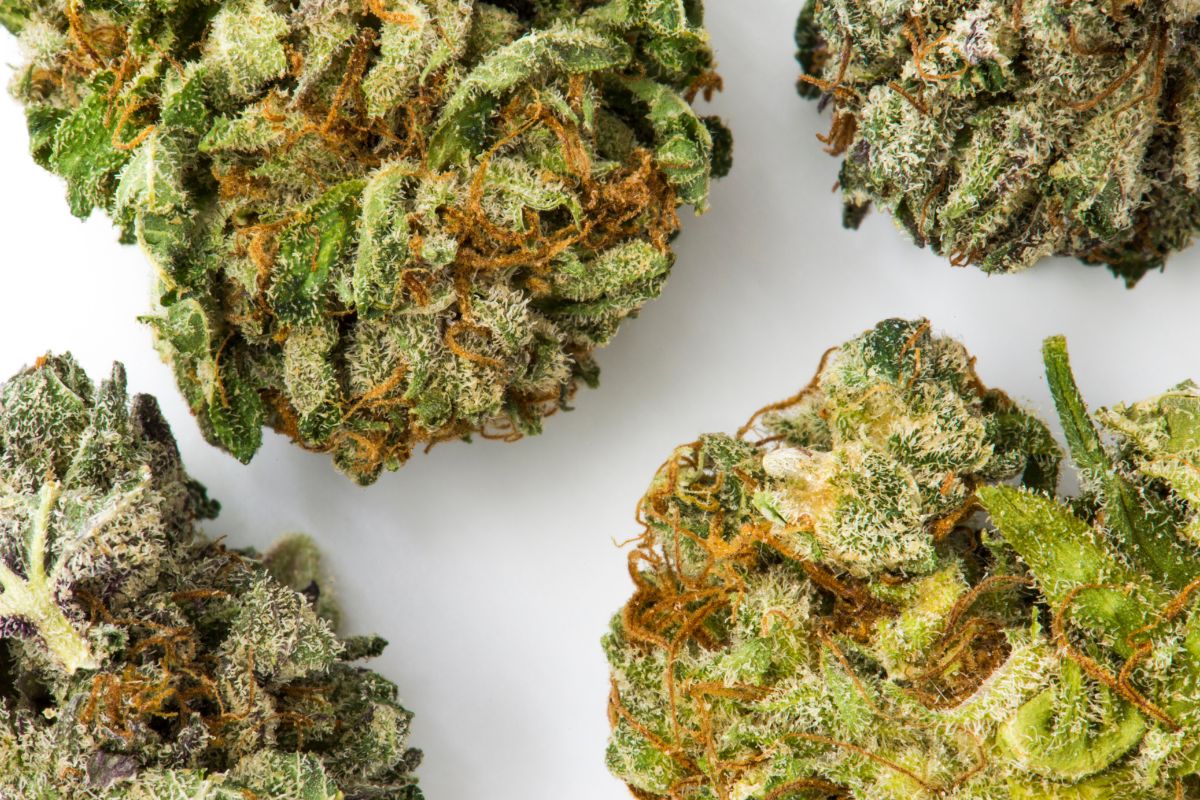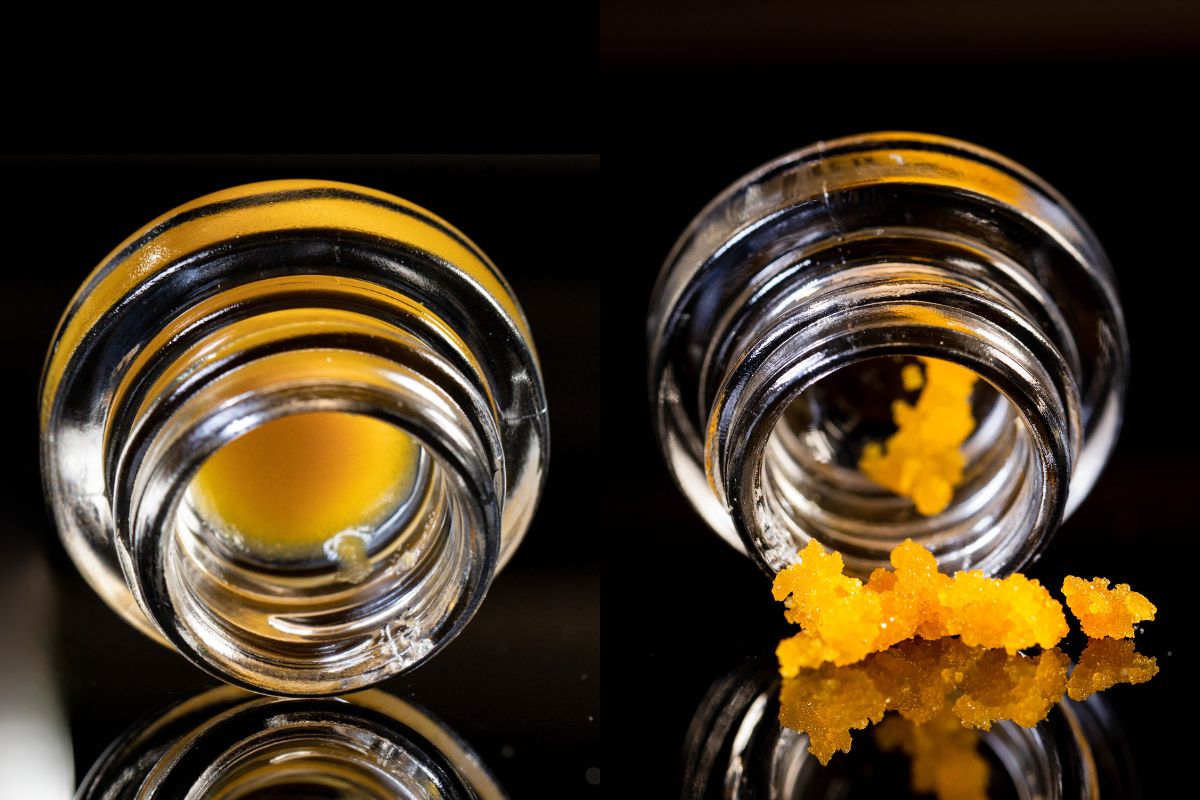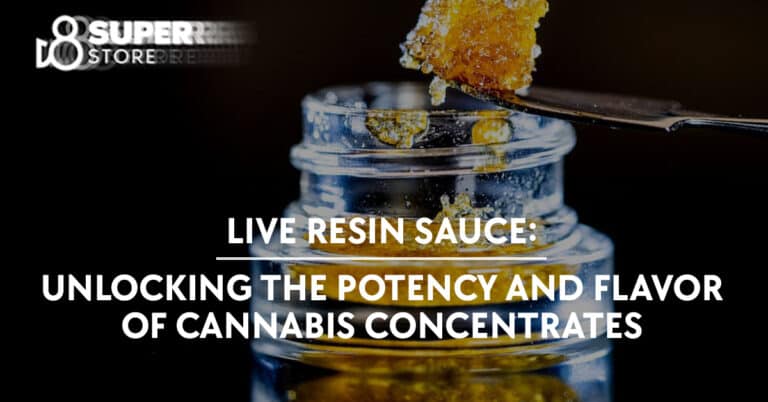How Do Weed Strains Get Their Names? A Guide to Cannabis Nomenclature
The Origins of Cannabis Strain Names
Cannabis strain names have a fascinating history, dating back to the 1960s and 1970s when breeders began transporting wild, feral strains from various regions across the globe. These original strains, known as landrace strains, were often named after their places of origin. Examples include Afghani, Thai, and Colombian Gold, each reflecting the distinct environmental conditions in the country in which they evolved.
Table of contents
- The Origins of Cannabis Strain Names
- Understanding Cannabis Strains and Their Names
- The Art of Cannabis Nomenclature
- Pop Culture and Cannabis Strain Names
- The Science Behind Cannabis Strain Names
- The Future of Cannabis Strain Names and Regulation
- How to Choose a Cannabis Strain Based on Its Name
- Conclusion
Landrace strains were then crossbred to develop new genetic combinations that offered different effects, flavors, resistance to pests, and improved yields. Some of these early hybrids resulted from careful scientific experimentation, while others were born out of pure curiosity or accidental pollination.
Over time, thousands of cannabis strains have been developed, each with unique characteristics and names that tell a story about their lineage, appearance, aroma, or effects.
Understanding Cannabis Strains and Their Names
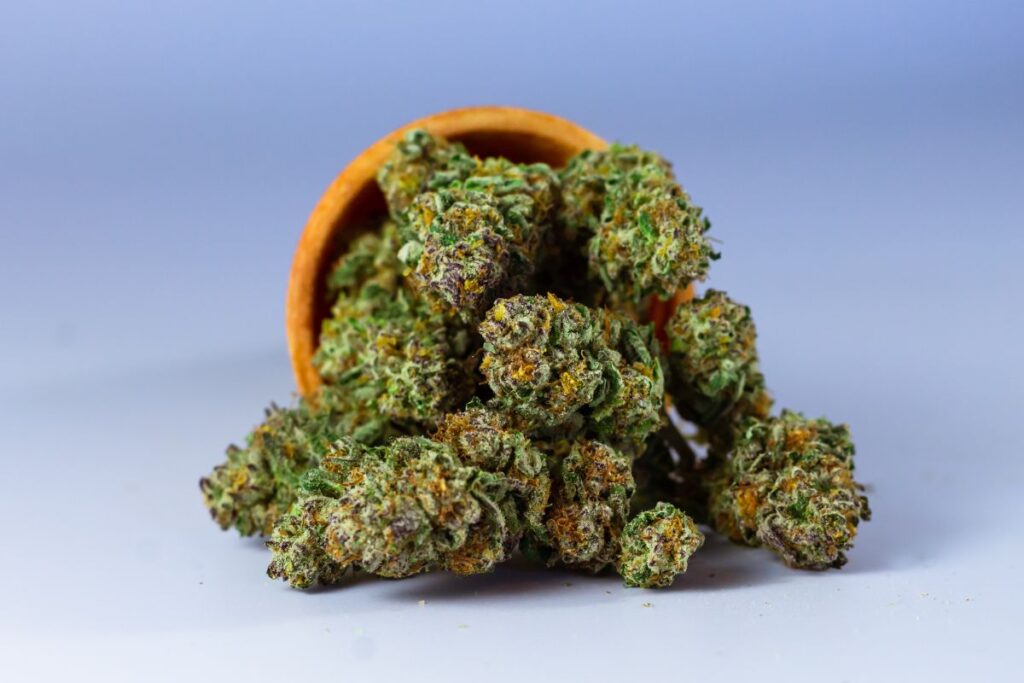
Navigating cannabis strain names can be challenging, but understanding their origins makes them more interesting and informative. Breeders select names based on various factors, such as geographical origin, scent, lineage, or the expected effects of the strain.
Parentage and Lineage
Some strain names directly reference their parent strains, blending their own names together to create a new one. For example:
- Blue Dream: A hybrid of Blueberry and Haze, known for its balanced effects and fruity aroma.
- Berry White: A cross between Blueberry and White Widow, indicating a mix of berry flavors and potent effects.
- Wedding Cake: A hybrid of Cherry Pie and Girl Scout Cookies, offering a sweet and tangy flavor with relaxing effects.
- Sour Diesel: Derived from Chemdawg and Super Skunk, known for its pungent, fuel-like aroma and energizing high.
Aroma and Flavor

Strain names often reflect their terpene profile, which influences scent and flavor. Examples include:
- Lemon Haze: Known for its citrus aroma and uplifting effects.
- Pineapple Express: Featuring tropical fruit flavors with an energizing high.
- Gelato: A dessert-like strain with sweet and creamy notes.
- Chocolate Thai: A classic strain named for its rich, earthy, and chocolatey scent.
Effects and Potency
Some breeders name strains based on the anticipated effects:
- Trainwreck: Suggesting a powerful, overwhelming high.
- Green Crack: Implying an energizing, stimulating experience.
- Couch Lock: Indicating a deeply relaxing strain that can leave users glued to their seats.
- Amnesia Haze: Known for its cerebral, uplifting effects that can sometimes make users feel forgetful.
Appearance and Growth Traits
The physical characteristics of cannabis and hemp plants can also inspire their names:
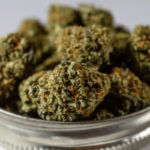
- Granddaddy Purple: Named for its deep purple hues.
- White Widow: Recognized for its dense coating of white trichomes.
- Orange Bud: Named for its vibrant orange pistils and citrusy aroma.
- Frosted Flakes: A strain known for its icy trichome-covered buds.
Pop Culture References
Many strain names come from movies, music, or celebrities:
- Jack Herer: Named after the famous cannabis activist.
- Khalifa Kush: Associated with rapper Wiz Khalifa.
- Skywalker OG: A nod to the Star Wars franchise.
- Bruce Banner: Named after the alter ego of The Incredible Hulk due to its powerful effects.
The Art of Cannabis Nomenclature
| Strain Name | Naming Origin | Example Strains |
|---|---|---|
| Landrace Strains | Named after their native region where they naturally evolved. | Afghani, Thai, Durban Poison, Acapulco Gold |
| Genetic Lineage | Named based on parent strains or hybridization. | Blue Dream (Blueberry × Haze), Gelato (Sunset Sherbet × Thin Mint GSC) |
| Effects & Potency | Named for their effects on users. | Green Crack (energizing), AK-47 (powerful, long-lasting) |
| Appearance & Aroma | Named based on color, smell, or taste. | Purple Haze (purple hues), Lemon Haze (citrusy) |
| Pop Culture & History | Inspired by famous figures, movies, or events. | Skywalker OG (Star Wars reference), Bruce Banner (Hulk-like potency) |
| Breeder or Brand Naming | Given unique names by breeders or brands. | Runtz (by Cookies), Wedding Cake (by Seed Junky Genetics) |
Naming a cannabis strain requires both scientific understanding and creativity.
Breeders may draw inspiration from a plant’s color, shape, and aroma when deciding on a name.Some strains consuming cannabis are named based on their terpene profile, which influences scent and flavor, such as “Lemon Haze” or “Pineapple Express.”
The cognitive effects of a strain of marijuana can also play a role in naming, with strains like “Trainwreck” hinting at a powerful, overwhelming high.The uniqueness of a strain’s name is also important for branding, as certain names can become highly valuable in the medical cannabis market.
Pop Culture and Cannabis Strain Names
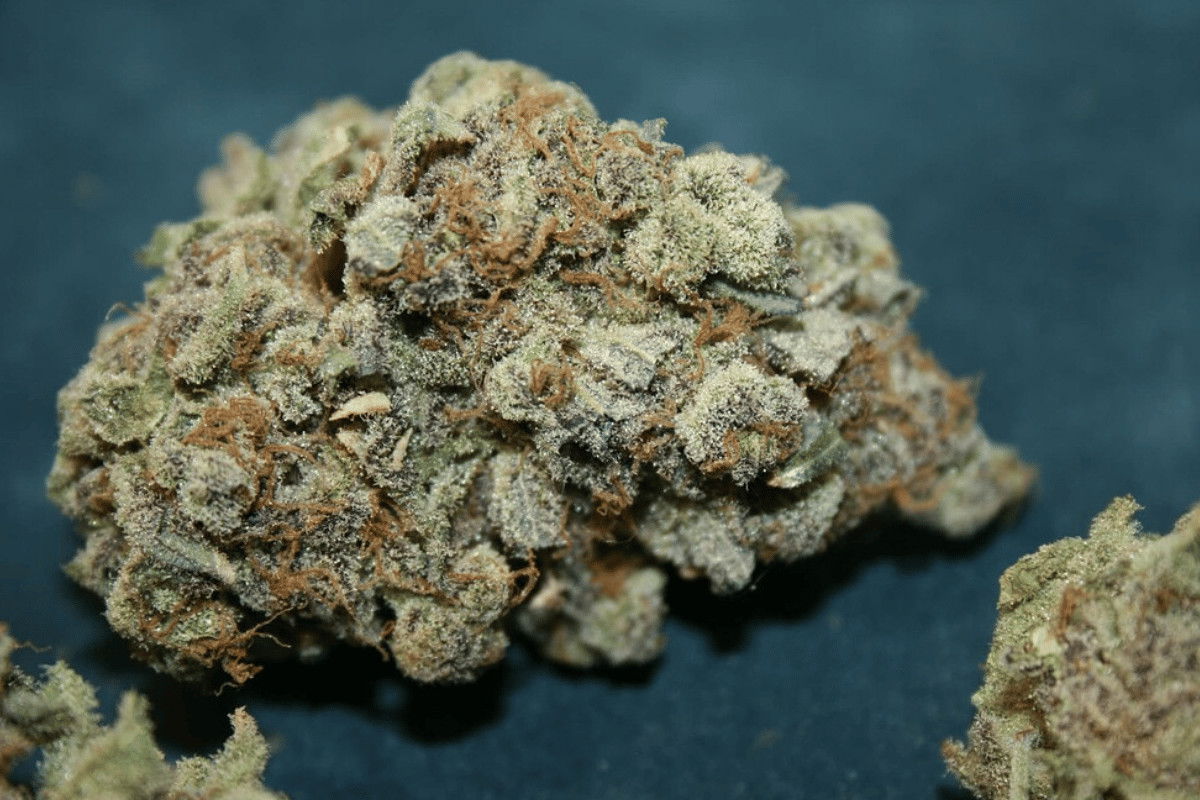
- The trend of naming cannabis strains after pop culture references is driven by the desire to make the product more relatable and appealing to consumers.
- The names of pop culture-inspired strains are often clever and creative, and can help to differentiate a product from others on the market.
- Examples of pop culture-inspired strain names include “Sputnik” and “Pre-98 Bubba Kush”.
- The trend is also driven by the growing popularity of cannabis and the increasing competition in the market.
The Science Behind Cannabis Strain Names
| Strain Name | Origin/Meaning | Dominant Terpenes | Effects |
|---|---|---|---|
| OG Kush | “OG” stands for “Original Gangster” or “Ocean Grown”; hybrid of Chemdawg, Lemon Thai, and Pakistani Kush | Myrcene, Limonene | Relaxing, euphoric, stress relief |
| Sour Diesel | Named for its pungent, fuel-like aroma; likely a cross of Chemdawg and Super Skunk | Caryophyllene, Limonene | Energizing, cerebral, uplifting |
| Blue Dream | Cross between Blueberry and Haze, named for its dreamy euphoria | Myrcene, Pinene | Relaxing, creativity-boosting, mild euphoria |
| Granddaddy Purple | Famous for its deep purple color; cross of Purple Urkle and Big Bud | Myrcene, Caryophyllene | Sedative, stress relief, body relaxation |
| Gorilla Glue #4 | Named for its sticky resin production; mix of Chem’s Sister, Sour Dubb, and Chocolate Diesel | Limonene, Myrcene | Heavy relaxation, couch-lock, euphoria |
| Girl Scout Cookies (GSC) | Named for its sweet, dessert-like aroma; hybrid of OG Kush and Durban Poison | Caryophyllene, Linalool | Euphoric, uplifting, appetite-stimulating |
| Pineapple Express | Named after the tropical fruit aroma and a popular film | Terpinolene, Limonene | Energizing, uplifting, focus-enhancing |
| Jack Herer | Named after cannabis activist Jack Herer; hybrid of Haze, Northern Lights, and Skunk | Terpinolene, Pinene | Uplifting, clear-headed, creativity-boosting |
| Durban Poison | Named after its origin in Durban, South Africa | Terpinolene, Ocimene | Energizing, focus-enhancing, cerebral high |
| Northern Lights | Named for its calming, dream-like effects; pure Indica strain | Myrcene, Caryophyllene | Deep relaxation, sleep aid, pain relief |
Breeders use various scientific techniques to create new strains, including selective breeding and genetic mapping. The observed chemical diversity combined genetic background of cannabis plants plays a key role in determining strain names.
Chemical Composition and Naming
Breeders may choose names based on a strain’s chemical profile, including:
- Cannabinoid Content: Strains high in THC often have names suggesting strong psychoactive effects (e.g., Gorilla Glue).
- Terpenes: Certain strains are named after their dominant terpenes (e.g., Linalool-rich strains might be named Lavender).
- CBD-Rich Strains: Strains with high CBD levels may have calming names such as Harlequin or Charlotte’s Web.
- Hybrid Effects: Some strains have names indicating a mix of effects, like Balanced OG or Euphoric Diesel.
The Role of Breeding and Hybridization
With thousands of cannabis strains available, many cannabis breeders experiment with hybridization to enhance flavor, aroma, and effects. Through crossbreeding, they create unique strains with proprietary names, ensuring brand recognition and marketability.
The Future of Cannabis Strain Names and Regulation
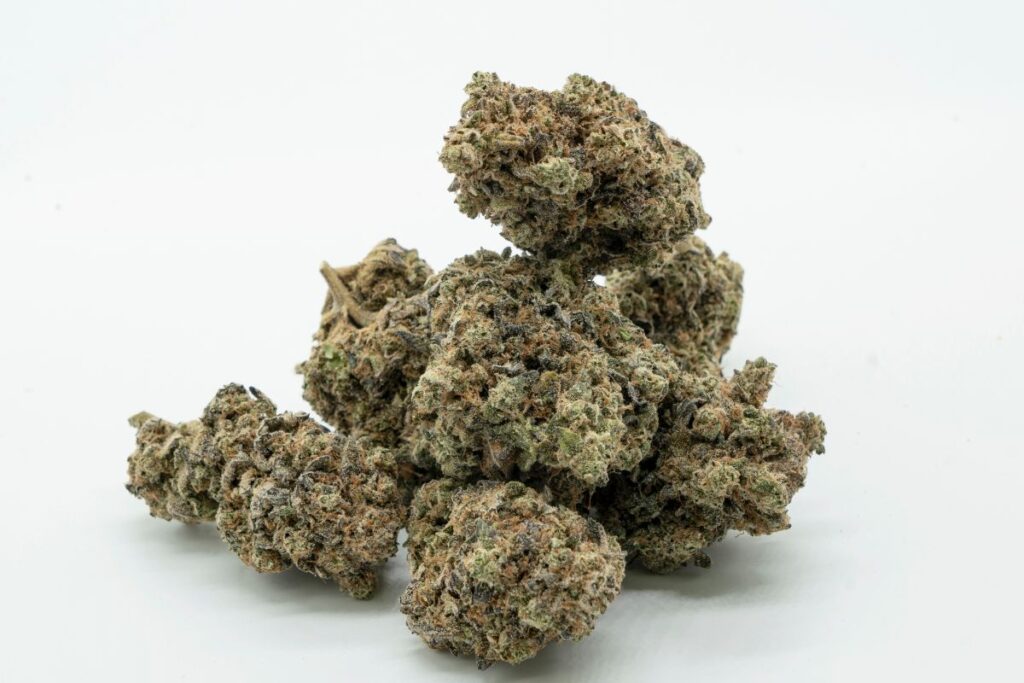
As the cannabis industry grows, strain names will need to adapt to new regulations and consumer trends. Some key developments include:
- Standardization: Many experts advocate for a standardized naming system based on genetics rather than creativity alone.
- Trademark and Branding: Some companies protect strain names to prevent unauthorized use, similar to the wine or craft beer industries.
- The use of commercial labels and strain names will become more important as the industry becomes more commercialized.
- The future of cannabis strain names will be shaped by a combination of science, creativity, and regulation.
- Scientific Classification: Advances in genetic sequencing may lead to classification based on precise genetic markers rather than anecdotal naming.
- Medical vs. Recreational Naming: Strains designed for medicinal use may shift toward pharmaceutical-style names, while recreational strains may retain creative, engaging names.
How to Choose a Cannabis Strain Based on Its Name
Understanding the logic behind cannabis strain names can help cannabis consumers to make informed decisions. Here are some tips:
- Look for Parentage Information: If a strain has a name like Sour Kush, it likely combines genetics from Sour Diesel and OG Kush.
- Consider Flavor and Aroma Cues: Names like Strawberry Cough or Blueberry Muffin suggest fruity flavors.
- Pay Attention to Effects-Based Names: If you need an energizing strain, avoid names like Couch Lock and lean toward names like Green Crack.
- Research Breeder Reputation: Some strains may have multiple versions from different breeders, leading to variations in effects.
- Check for Regional Differences: Some strain names may be specific to certain markets, so be aware of alternative names.
Conclusion
Cannabis strain names are a just a few examples of crucial part of cannabis culture and the industry. Understanding their origins and science helps consumers navigate the complex world of cannabis. As the industry evolves, strain names will continue to influence consumer preferences, branding, and regulatory compliance.
Whether you’re a seasoned cannabis enthusiast or just starting out, learning about strain names enhances your appreciation for the diversity and complexity of cannabis plants. The future of strain naming will likely involve a mix of tradition, science, and marketing, ensuring that cannabis strains remain as unique as the experiences they provide.
How do breeders come up with cannabis strain names?
Breeders use a combination of factors, including lineage plant genetics, aroma, effects, and appearance, to create unique and marketable strain names.
Are strain names standardized?
No, there is no universal standard for naming cannabis and marijuana strains yet, though some experts advocate for a more systematic approach based on genetics.
Can different breeders have strains with the same name?
Yes, multiple breeders may use the same strain name, but the genetics and effects can vary between different versions.
Do strain names indicate potency?
Not always. Some names suggest strong effects, but the potency depends on cannabinoid levels and terpene composition.
Why do some strains have unusual or funny names?
Many cannabis strains are named based on pop culture references, inside jokes, or creative branding strategies.

